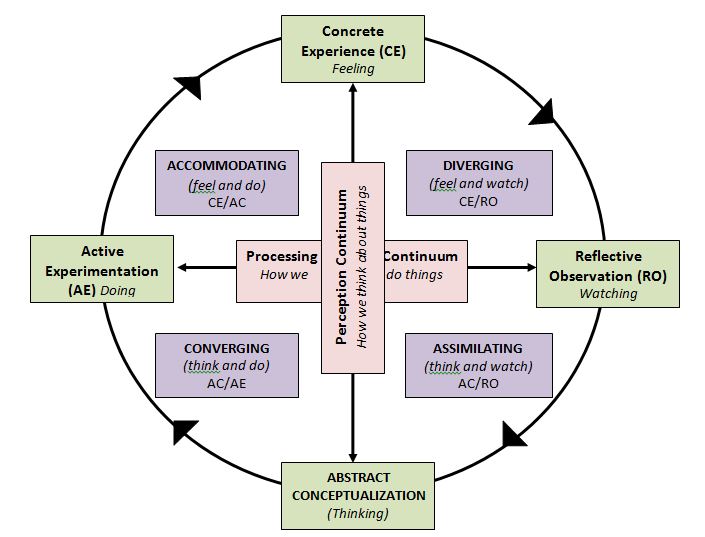MODULE THREE: Personal Learning Styles
OVERVIEW: Preceptor Education >> Module Three >> Personal Learning Styles
We have known that people differ in how they learn, think and problem-solve. Learning styles refer to the characteristic way a person processes information and behaves in a learning environment. There are different variables addressed in each learning style inventories. Some learning styles look at how people “take in” information most effectively through a particular sensory method. Some utilize our preference to process and “make sense” of information, while others take aspects of our innate temperament and personality traits that influence how we learn, interact with and interpret our environment.
Formal testing of learning styles is available but equally beneficial is simply reflecting, thinking, observing and communicating with our learners about how they process their learning. More importantly then knowing the learning style of our learners is to know our own learning style. The method we choose to instruction is often in the same method we learn best. We tend to gravitate to colleagues and students that work the same way we do because their learning style is similar to our own. We are most comfortable in this situation and we learn at our best when we are comfortable.
Understanding different learning styles will enable a preceptor to adapt to facilitate learning. For instance, recognizing that one student learns best through listening, one prefers to see the material and another is most comfortable actually trying out information in real situations. As a preceptor, organizing a learning activity that involves telling, showing and doing will ensure that each learner will be operating, at least part of the time, in their own preferred learning style. Cycling through all styles will encourages deep, long-lasting learning.
Understanding learning styles is a tool to support and appreciate preferences and approaches to learning, and to facilitate respect and celebrate of differences.
Two learning style inventories that will be discussed are the VATK inventory and the Kolb Learning inventory.
VATK
VATK is an acronym for Visual Auditory Tactile Kinaesthetic learning styles which represents our “innate” preference to receive information from the world around us.
Kolb Learning Inventory
Any learning style will help you understand how you learn best in an educational setting and in everyday life. The Kolb Learning Inventory can be described as a cycle made up of four basic phases. This learning style inventory will give you a better understanding of how you learn and knowing will enable you to;
- Maximize your learning from educational programs
- Solve problems
- Work in teams
- Manage disagreement and conflict
- Make career choices
- Improve personal and professional relationships.

The way we think about information is through the process of either Concrete Experience or Abstract Conceptualization thereby creating the Perception Continuum.
The way we do things is the process of either Reflective Observation or Active Experimentation, thereby creating the Processing Continuum.
Thinking = Perception Doing = Processing
When you use both continuums in an experience, we expand our potential to learn. You may begin a learning process in any of the four phases of the learning cycle and would cycle through all four phases in a well-rounded learning process. There may be moments where you sometimes skip a phase in the cycle or focus primarily on just one.
The combination of how you do things and how you think about things creates our specific and preferred learning style. These are Diverging, Assimilating, Converging and Accommodating styles. If, for example, you prefer to think about things through feeling (Concrete Experiences) and do things through watching (Reflective Observation), you would have a Diverging style of learning. If you prefer to think about things through thinking (Abstract Conceptualization) and doing things through doing (Active Experimentation), then your preferred learning style is Converging and so on.
|
|
|
|
|
|
|
|
Remember that setting up a learning experience that includes all four phases of the learning cycle will incorporate all type of learners at one stage or another. This will also maximize and stimulate deep learning in each individual. If there a student is having difficulty understanding a concept or principle then acknowledging their preferred style and starting their learning process where they are most comfortable. This will facilitate and enable a more effective learning experience for them.
NEXT >> Substandard Performance




 The Diverging Style
The Diverging Style The Assimilating Style
The Assimilating Style The Converging Style
The Converging Style The Accommodating Style
The Accommodating Style